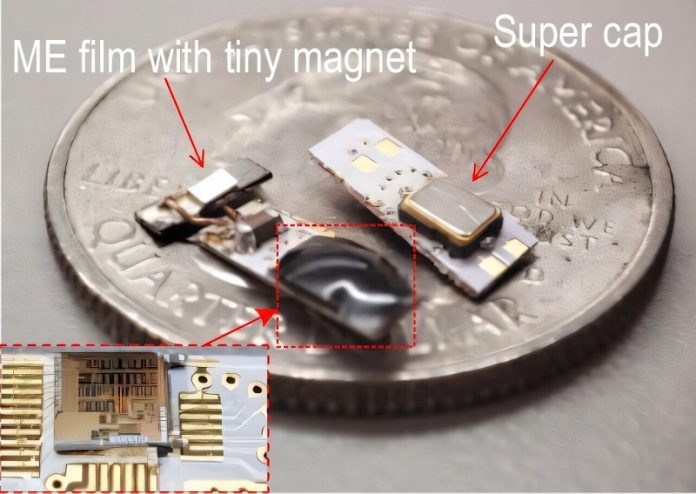
The researchers demonstrated the feasibility of their security scheme in a state-of-the-art millimeter scale implant based on magnetoelectric power and data transfer. Credit: Kaiyuan Yang/Rice University.
Imagine a tiny device inside your body—smaller than a grain of rice—that can treat serious health conditions like epilepsy or depression.
These smart implants are part of a new wave of medical technology designed to make life easier for people with chronic illnesses.
They don’t need batteries and can be controlled wirelessly by doctors.
But as helpful as they are, these devices also bring new risks: cyberattacks.
Yes, just like smartphones or bank accounts, medical implants could be hacked. If a cybercriminal takes control, the results could be dangerous—even deadly.
Think of a brain implant being hijacked to cause seizures, or a pacemaker getting fake signals that mess with your heartbeat. These may sound like science fiction stories, but they are real concerns for scientists and doctors.
That’s why researchers at Rice University are creating smarter, safer implants that can’t be easily hacked. Professor Kaiyuan Yang, an expert in electrical and computer engineering, leads the team at the Secure and Intelligent Micro-Systems (SIMS) Lab. His goal: to make sure these advanced medical devices are not just useful—but also safe.
“Security in medical technology is becoming more important than ever,” Yang says. “As devices get smarter, they also become more vulnerable.”
Yang and his team recently introduced a new security system at a major science conference. It’s called **ME-DTLS**, short for _magnetoelectric datagram transport layer security_. That may sound complicated, but the idea is simple and clever.
These tiny implants don’t use batteries—they get their power wirelessly from an external device worn by the patient, like a small patch or hub. Normally, if this hub shifts a little to the side, the signal weakens—a flaw. But Yang’s team found a way to turn this “flaw” into a way to keep hackers out.
Here’s how it works: Moving the hub in short or long motions sends a secret pattern of ones and zeros, like a password. For example, a short wiggle might mean “1,” and a longer move could mean “0.” The patient—or even an emergency doctor—can use a special pattern to unlock the device securely.
It’s a bit like entering a PIN or getting a code via text when logging into a bank account. This movement-based method adds a second layer of protection. So even if someone stole the password, they’d still need to move the hub in the right way to get access.
The system also helps in emergencies. If a patient is unconscious and can’t give a password, a doctor or paramedic can still unlock the device—_but only if they are nearby_. This keeps the implant safe from online hackers who might try to break in from afar.
Tests with volunteers showed the method works almost perfectly, correctly identifying the movement patterns 98.72% of the time. It’s also fast and doesn’t use much energy.
Yang’s design avoids the need for bulky sensors or complicated parts, making it ideal for tiny implants. “This is the first time anyone has used the natural behavior of wireless power to improve security,” he said.
In the future, this innovation could protect millions of patients, giving them peace of mind that their life-saving implants are not only smart—but also secure.